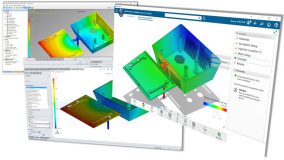How Does Plastic Injection Molding Work?With plastic injection molding, plastic parts are made by injecting molten plastic material into a mold at high pressure. In the process, the polymer is heated to high temperatures and then injected into the molding machine. The plastic is forced to solidify in the form of a part and is then cooled to remove it from the machine. This process is used in manufacturing various types of parts, including injection molding machine parts, printing parts, and injection molds.
As part of the process, plastic injection molding machines must be carefully designed to facilitate production, taking into account the material of the mold, features of the finished product, and properties of the plastic injection molding machine. These machines are capable of heating plastic to high temperatures quickly, which minimizes material waste. Furthermore, they can produce molds with multiple cavities for intricate designs without compromising on speed or accuracy.
Click Here to Read Part 1st
Definitive Guide to Injection Molding:
Injection molding is a process used to mass-produce small, precise polymer components with complex shapes. The injection molding process consists of six steps: Clamping, Injection, Dwelling, Cooling Mold, Opening, and Ejection. Injection molding is the most widely used form of plastics processing worldwide due to its versatility and high production rates.
The injection molding process involves the injection of heated, liquefied plastic into a temperature-controlled mold under high pressure. Materials selection in mechanical design provides a comprehensive guide to injection molding that encompasses manufacturing process parameters, materials selection, and design criteria. This book covers all aspects of injection molding from manufacturing process parameters to design criteria for producing high-quality parts.
Types of Auxiliary Equipment that support Injection Molding Processing:
Auxiliary equipment used in the injection molding process includes motors, hydraulics, pumps, and drying systems. The motors are used to drive the machine parts as per the desired parameters. Hydraulic systems are used to provide pressure to eject plastic pellets from machine parts. Pumps are also used to control plastic pellets feeding into machine parts. Drying systems help in removing excess water from plastic pellets before feeding them into mold machine parts.
The temperature control unit (TCU) is used to manage heat transfer within the mold and machine. TCUs come with heating controls, thermometers, and other sensors for monitoring the machine’s temperature. The components of an injection molding machine include a hopper, barrel, reciprocating screw, heater(s), and nozzle. A hopper is used to load plastic pellets into machine parts and is connected to a feeder device. The barrel is the part where plastic pellets are melted and then injected into mold cavities by a screw mechanism. Heater(s) provide thermal energy to plastic granules so that they turn into liquid form.
Click Here to Read Part 1st
What are the 4 stages of injection molding?
Injection molding is a process consisting of six steps, including the creation of the mold. The mold consists of two primary components, the injection mold, and the ejector mold.
The injection molding cycle begins when the mold closes and the polymer is injected into the cavity. The holding pressure is maintained to compensate for material shrinkage, and the mold opens once the part is sufficiently cool. The injection molding machine consists of 3 main parts: the injection unit, the mold, and the clamping/ejector unit.
Clamping of Magic Behind Plastic Injection Molding:
The mold halves are held after the molten plastic has stayed in the cavities and before they are closed during the clamping process. It occurs in the clamping unit, which is in charge of
By applying enough clamping pressure to withstand the injection force, the mold halves are kept together from the injection step until the dwelling stage.
- after the residence stage, ejecting the molded component.
- Between molding cycles, the mold plates are opened and closed.
- preserving the appropriate alignment of the mold plates.
Conclusion:
Injection molding is a process through which plastic material is injected into the molding machine. The plastic material enters the machine and solidifies, after which it ejects from the machine. Injection molding is a process that requires specialized equipment and trained personnel to carry out efficiently. Besides, injection molding also requires high-quality plastic material for the process to be successful. If you are looking to design custom plastic parts, request an online quote today.
 Plastic Injection Mold Material Guide – Advantages & Applications Of 20 Common Injection Molding Materials
Plastic Injection Mold Material Guide – Advantages & Applications Of 20 Common Injection Molding Materials  Uncover the Magic Behind Plastic Injection Molding – Part 1
Uncover the Magic Behind Plastic Injection Molding – Part 1  10 Plastic Injection Processes – Advantages, Disadvantages, And Applications Of Plastic Injection
10 Plastic Injection Processes – Advantages, Disadvantages, And Applications Of Plastic Injection  The three key factors affecting mold cost have nothing to do with materials!
The three key factors affecting mold cost have nothing to do with materials!